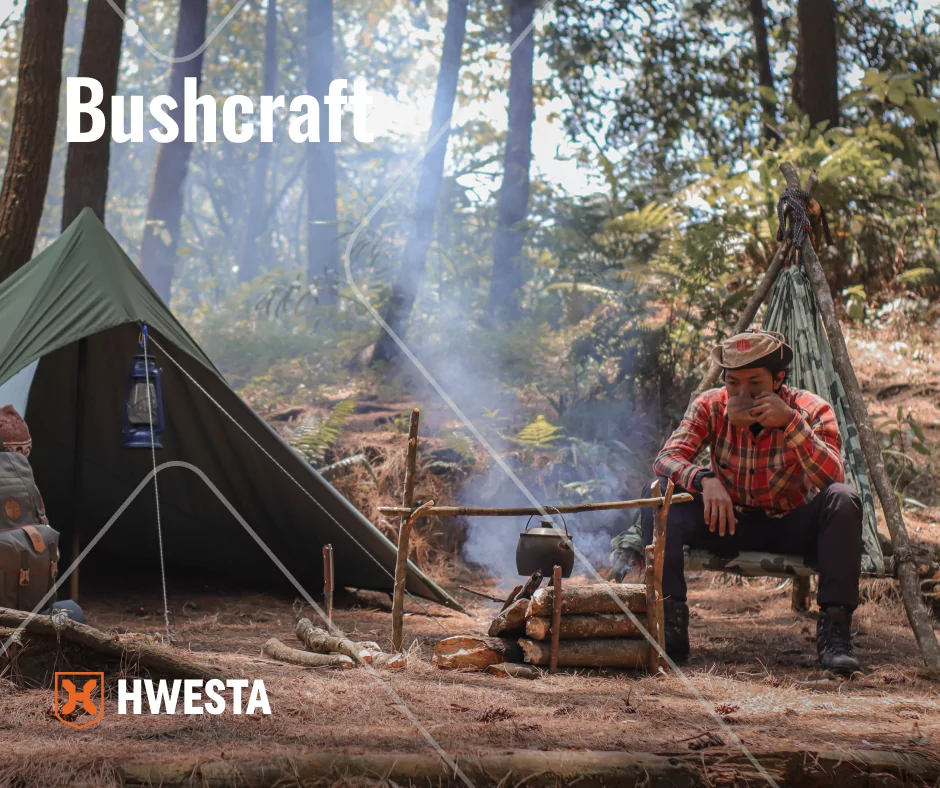- News
- 1 likes
- 6223 views
- 0 comments

Bushcraft, the art of survival in the wilderness, is a skill that is intrinsically tied to the history of humanity. It is a set of techniques that allow humans to live in harmony with nature, utilizing the available resources. In this article, we will delve into the history of bushcraft, uncovering its roots and evolution from ancient times to the present.
Bushcraft through the Centuries: Roots in Survival Traditions
The origins of bushcraft can be traced in various cultures around the world where wilderness survival was a way of life. These skills were passed down from generation to generation, forming a rich history of knowledge and experience. Here are some examples of how different communities shaped bushcraft:
1. Aboriginal Cultures in Australia: The Aboriginal people of Australia are among the oldest cultures in the world, and their survival skills in the Australian outback are unparalleled. Knowledge of the terrain, the ability to procure food and water, and the construction of shelters were crucial for survival in challenging conditions.
2. Native American Tribes in North America: Native Americans, especially those in what is now the United States and Canada, developed unique survival skills in various ecosystems, from forests to prairies. Hunting, fire-making techniques, and the construction of wigwam-style tents were just some of the skills passed down from generation to generation.
3. Eskimos and Inuit: In the Arctic regions of northern Canada and Alaska, Eskimos and Inuit acquired survival skills in extreme frozen and glacier conditions. Building igloos, ice fishing techniques, and hunting Arctic animals were crucial for their survival.
4. Trappers and Hunters: In the history of the United States and Canada, European trappers and hunters brought their survival skills, which were necessary for obtaining food and animal hides. These skills included hunting, fire-making, and shelter construction.
Bushcraft in the Modern World
With the development of civilization and technology, bushcraft skills gradually transformed and adapted to the modern world. Here are some key moments in the history of modern bushcraft:
1. Baden-Powell and the Scouting Movement: Sir Robert Baden-Powell, a British military officer closely associated with the founding of the Scouting movement, played a crucial role in popularizing survival skills among youth. Baden-Powell was fascinated by survival skills and believed they were important not only for soldiers but also for young people. In 1907, he organized the first Scout camp on Brownsea Island, where Scouts learned skills such as fire-making, wilderness navigation, and first aid. This event is considered the birth of Scouting, and survival skills became an integral part of the Scouting educational program.
It is worth noting that Scouts around the world still learn survival skills, including fire-making, shelter construction, and compass use. These skills are important not only for wilderness survival but also for character development and self-confidence in young people.
2. World War II: World War II was a time of immense global conflict where soldiers needed survival skills in various terrains. Many soldiers, both Allied and Axis powers, had to survive in challenging terrains, from wild forests to deserts. Therefore, survival skills became part of military training.
Within these training programs, soldiers learned how to make fires under difficult conditions, build effective shelters, find food and water in the wilderness, and deal with injuries and wounds. These skills were crucial for survival on the battlefield, especially in situations where supplies were limited.
After the war, many of these survival skills persisted and found application in civilian life, contributing to the development of bushcraft as a discipline focused on wilderness survival.
3. Les Stroud and "Survivorman": Les Stroud became one of the most recognizable figures in the world of bushcraft through his television program "Survivorman." In this program, Les Stroud ventured alone into wild and inhospitable areas around the world, where he attempted to survive using only limited resources and his skills.
"Survivorman" not only became a popular television show but also served as inspiration for many people who began to take an interest in bushcraft and survival skills. Stroud showed viewers that understanding and mastering these skills could increase one's chances of survival in the wild, drawing the attention of many adventure enthusiasts.
4. Ray Mears and Bushcraft Education: Ray Mears, a British survival expert, contributed to the development of bushcraft by hosting television programs as well as offering courses and workshops on survival skills. His approach to bushcraft focuses on respecting nature and using natural materials and techniques.
Mears conveyed his knowledge about shelter building, food and water procurement, and the use of local resources, helping many people learn practical survival skills. His television programs, such as "Ray Mears' Bushcraft" or "Wild Britain with Ray Mears," served as a source of inspiration for many adventure enthusiasts and bushcraft enthusiasts.
The history of bushcraft is rich and diverse, encompassing many cultures and eras. It is a collection of skills that were essential for survival over the centuries and continue to be valued in today's world

Comments (0)